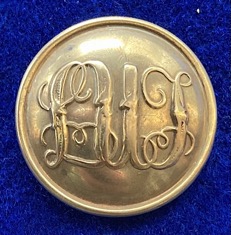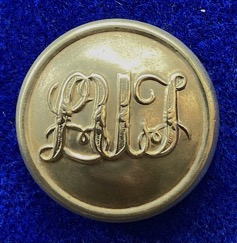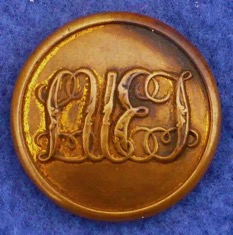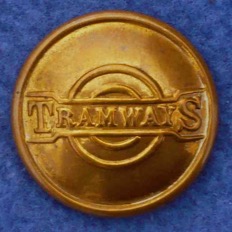London United Tramways
Owner London United Tramways Company Limited
Took over 20th August 1894 (West Metropolitan Tramways [horse]; from receivership)
Operator London United Tramways Company Limited
First electric route 4th April 1901
Company renamed 11th November 1901 ('London United Tramways [1901] Limited')
Taken over (ownership) September 1902 - controlling interest gained by the Underground Electric Railways Company of London Ltd
Company renamed 1907 ('London United Tramways Limited')
Last horse service 20th April 1912
Ownership transferred 1st January 1913 (London and Suburban Traction Company Limited - a holding company jointly owned by the Underground Electric Railways Company of London Limited and the British Electric Traction Company Limited)
Taken over 2nd May 1922 (London County Council Tramways) — Hammersmith and Shepherds Bush routes
Taken over 1st July 1933 (London Passenger Transport Board) - remaining routes
Closed 13th December 1936 (last ex-LUT tram route)
Length 55.24 miles
Gauge 4ft 8½ins
Button description (Pattern 1) Script initials, ‘LUT’, within a raised rim.
Materials known Brass; black
Button Line reference [113/42]
Button description (Pattern 2) Script initials, ‘LUET’, within a raised rim.
Materials known Brass
Button Line reference [113/43]
Button description (Pattern 3) TRAMWAYS ‘bar and circle’ device within a raised rim.
Materials known Brass
Button Line reference [114/72]
Comments There are two distinct variants of the Pattern 1 button, one with a noticeably taller script than the other, the difference almost certainly being due to variation between button suppliers.
The 'LUET' initials (Pattern 2) stand for 'London United Electric Tramways'; although no company of that name ever existed, the LUT formally adopted this title in 1901 as a Fleet Name, employing it on tram cars, official paperwork (including tickets) and uniforms. The Fleet Name was probably introduced to reflect the electrification of 1901, especially as it was London's first overhead electric tramway. In view of this, and the relative rarity of Pattern 1 buttons, I strongly suspect that the latter were in use prior to 1901, thereafter gradually being replaced by the Pattern 2 button. Although the company once again altered the Fleet Name in 1910 — to London United Tramways Limited — this was not reflected in the tramway buttons.
With respect to the Pattern 3 button, this would appear to have been issued to the London United Tramways — along with Metropolitan Electric Tramways (MET) and the South Metropolitan Electric Tramways SMET) — shortly after the end of the Great War. All three tramway companies had effectively been merged — under the umbrella of a holding company (the London & Suburban Traction Company Limited) — over a six-month period between January (LUT and M.E.T) and May 1913 (SMET). Although they continued to maintain their individual identities, from 1915 onwards they were actively administered as a single entity, though attempts at standardisation (e.g., uniforms) had to wait until circa 1920.
The history of the LUT and particularly its ownership is complex. The company was expressly formed to take over and rebuild the West Metropolitan Tramways, and was essentially a family-owned enterprise (the White family — the controllers of the Imperial Tramway Company). However, in September 1902, George White's majority interest was sold to Speyer Brothers, the financiers behind the Underground Electric Railways Company of London Limited; although no formal merger ever took place, this transaction effectively transferred control of the LUT to the UERL. Nine years later (on the 15th January 1912), the UERL itself merged with the London General Omnibus Company, going on to acquire full control of two further underground railways (The City and South London Railway and The Central London Railway). This 'combine' came to be known as the 'Underground Group'. On 1st January 1913, the LUT was formally transferred to the London & Suburban Traction Company Limited, along with the MET and the Tramways (M.E.T) Omnibus Company Limited, both of which were owned by the British Electric Traction Company Limited (BETCo); the BETCo's remaining London tramway (the SMET) followed suit in June 1913. Although the UERL had a majority stake in the L&STCo, administrative control of the three tramways was initially placed in the hands of the BETCo; this changed on the 1st May 1915, when administration was passed to the UERL, so that all three effectively now came under the sway of the 'Underground Group'. In November 1928, the BETCo sold its remaining 5% share in the MET, as well as its holdings in the L&STCo to the UERL.
The precise origins of the London Underground 'bullseye' logo used on the Pattern 3 button are still not entirely clear. The distinctive lettering (larger first and final letters) was a design promoted by the District Railway (a UERL company) in 1908 as a means of branding London's underground railways (not just the District Railway). At the same time, the District Railway also began to introduce station signage that is clearly recognisable as the forerunner of the later 'bullseye' logo. This consisted of a blue horizontal bar with the station name in white lettering, overlain on a solid red circle - the design of which was said to have been greatly influenced by the London General Omnibus Company's emblem (a spoked wheel with the word 'GENERAL' displayed across it). Although the iconic 'UNDERGROUND' bar and circle roundel (with a ring as opposed to a solid circle) began to appear on publicity material from around 1912, it was not formally registered until 1917 and only after that did it start to appear on stations. It was subsequently used throughout the Underground Group's enterprises (railways, buses, tramways, electricity supply companies), and was subsequently adopted by the London Passenger Transport Board following the take over in 1933.



